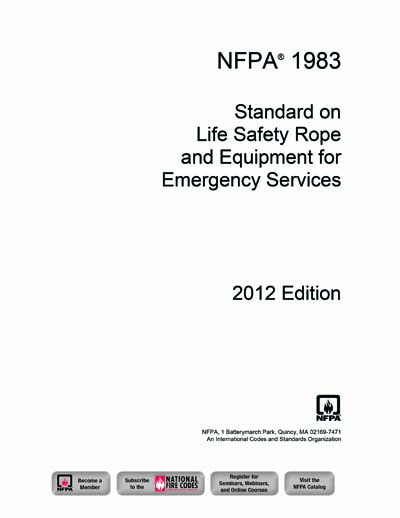

Knots significantly reduce the maximum arresting load due to a dynamic impact event when compared to ropes without knots, providing significantly more energy absorption than the sewn-eye alone. A single exception to this outcome is with the quadruple overhand on a bite (30–35 %). Knots are shown to significantly (45–60 %) reduce the quasistatic strength of rope when compared to a manufactured sewn-eye (40 %). We quantify the effectiveness of various common knots to reduce dynamic loads in typical fall scenarios for which the systems are designed, and interpret this change in the context of rope strength reduction due to the knot.

While energy absorption methods using rope deformation and/or accessory components have previously been evaluated, the ability for simple knots tied in the system to alter impact loads has not been studied in detail. Steel has historically a better performance when subjected to the flight environment (steel tends to deform before failure which allows some warning aluminum has a risk of a sudden fragile fracture type failure with little or no warning).Impact loads to the human body due to falls from height can be mitigated by well-designed and characterized fall protection systems. These standards offer assurance that the equipment has been manufactured and tested to agreed performance criteria including minimum breaking strengths, safe working loads and/or working load limits.įor flight operations, steel is the preferred material for organized mountain rescue activities. The adoption of EN standards and/or NFPA 1983 standards is widely accepted across many areas of rescue. In addition, the team using the equipment/components requires training and careful assessment of the equipment's suitability any time it is used. Steel main or central connectors if used with air rescue.Ĭonnectors/carabiners used in flight rescue operations as a part of the equipment of the crew or helicopter is regulated by an extra recommendation AIR-REC0014 HEC-HHO-Equipment from the ICAR Air Rescue Commission.Īlthough this recommendation relates to connectors as described in point 1, careful evaluation of equipment and components is required to ensure the best possible level of safety during organized mountain rescue activities and training. The ICAR Terrestrial Rescue committee recommends at organized mountain rescue operations for main/central attachment points and for air rescue operations only the use of:Ĭonnectors/carabiners must conform to EN 12275 or EN 362 or NFPA 1983 US-Standard


 0 kommentar(er)
0 kommentar(er)
